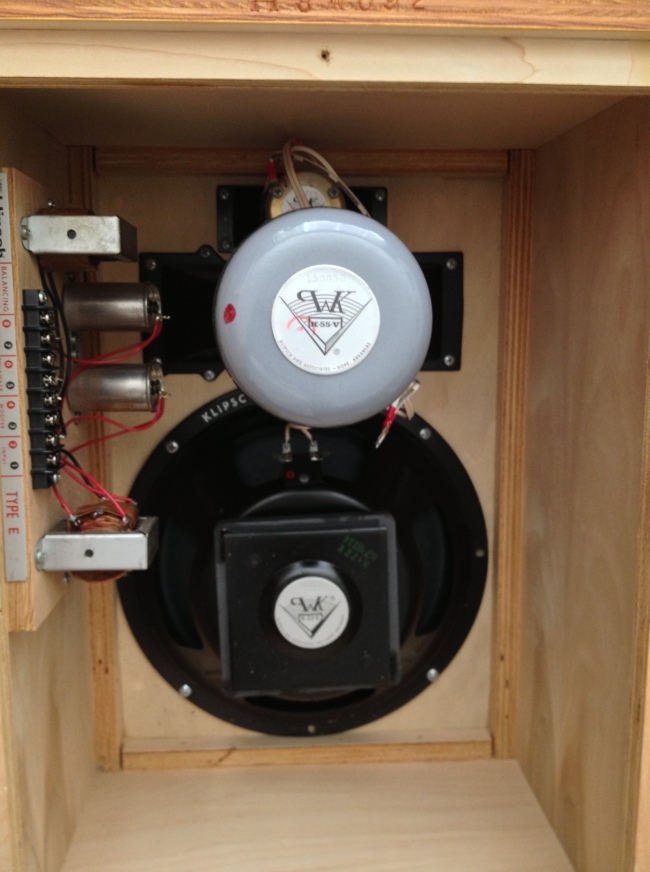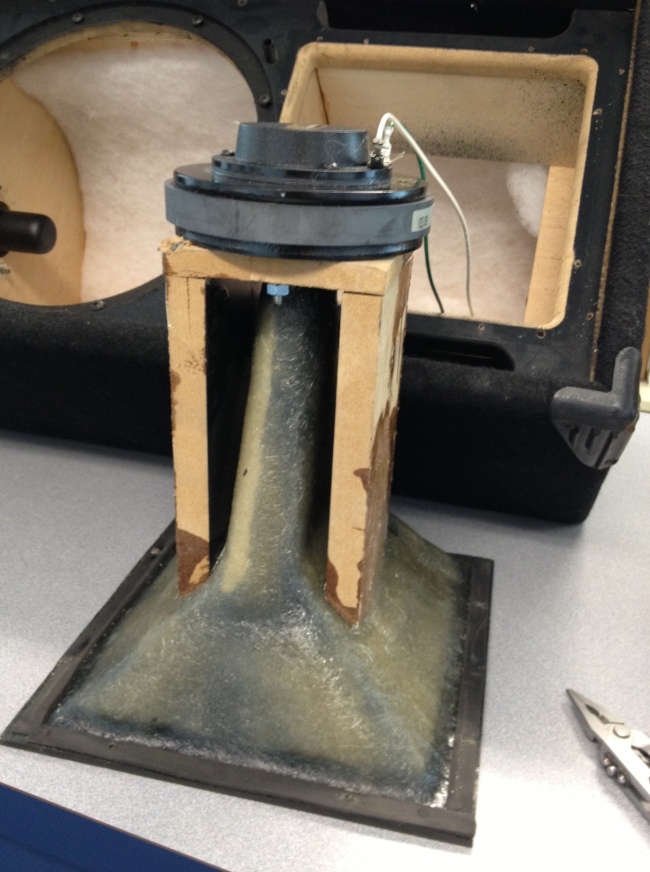Eight years ago I picked up a beautiful set of Klipsch Heresy speakers. My dad used to sell hi-fi in the 80s and one day an old friend and former customer called him up to say he was moving to Florida and letting go of his stereo (apparently they don’t allow nice stereos there). We went over to his house and auditioned what he had, which included this first generation Klipsch Heresy pair. After a brief listening session I couldn’t help but take the speakers home with me.
There are some fairly heated debates among hi-fi buffs over whether or not the Heresys are worth a damn. Some listeners hate them, some love them. I happen to be in the latter camp, so I’ve toted them along from place to place, most recently in my cross-country move to Montana. They always manage to find their place in my primary listening system, driven by a Kenwood M2A at 220 watts/ch.
With a manufacture date of sometime in 1980, these particular speakers are now 33 years old. They have been well cared for throughout their lives. The cabinets are in excellent condition and all the drivers are original, with the exception of diaphragm replacements in both K-77 tweeters. I had one die on me a couple years ago and opted to replace the HF diaphragms in both speakers for sonic consistency, with genuine Klipsch parts, of course.
Even when well cared for and used properly, the capacitors in the crossover network are bound to fail to some extent over time. The “Type E” crossover network found in Klipsch Heresy speakers up to 1982 consists of two capacitors, two transformers and a wiring block. All capacitors have a lifespan. While in a few rare instances they die suddenly when overdriven, they usually tend to drift off spec with age. Of course, as the caps drift off spec, so does the sonic character of your speakers.
Mine seemed to sound fine, but I figured they deserved some maintenance after several years of faithful service. I’m a bit of a novice when it comes to replacement of electronic parts such as this, so I didn’t feel comfortable sourcing my own capacitors. Luckily, a gentleman by the name of Bob Crites has replacement kits available on his website. Within a few days I had four caps and a wiring diagram on my doorstep. Time for some fun.
It’s pretty easy to remove the crossover, or “balancing network,” as Klipsch calls it. Loosen the screws on the wiring block for the three pair of driver leads and the rear panel input, remove two screws for board the x-over components are mounted to, and the whole network comes right out.
Isn’t that steel label plate cool? The two old capacitors are those oil-can looking things, located top center-ish on the board. Note the rust starting to build up on the outside–yeah, pretty old. Just clip the leads, unscrew them from the mounting plate and you’re ready to install the new caps. Along with new Sonicap capacitors (rated at twice the voltage of the original caps), Bob also includes mounting blocks and zip ties, leaving you with everything you need to complete the task minus some solder and an iron. Mount the new caps, consult Bob’s included wiring diagram (or take detailed pictures of the crossover before you remove anything), sling some solder and there you have it.
It took less than an hour to pull and update and reinstall the crossovers for both speakers. Not a bad Saturday project–plenty of time left over for a bike ride, a drink or an extended listening session with your refreshed speakers–or all of the above.
Let me take a step back and say that I had no proof my old capacitors were “bad.” Again, bad caps can continue to work, just not to their original specifications, so even though my speakers seemed fine, they may very well have strayed from their original sonic signature. My personal stash of electronic testing tools is limited to a couple of multi-meters, so there was no scoping to be had. However, I do own a cheap Dayton EMM-6 measurement microphone, a USB audio interface and a computer.
Before I even unhooked the speakers for their surgery, I downloaded a trial version of FuzzMeasure and set up a little measurement rig.
While the angle of the photo is a little misleading, I placed the microphone so its capsule was one foot off the grill, pointing about halfway between the tweeter and woofer–pretty much right at the K-55 midrange driver Klipsch lovingly named the “squaker.” I put some tape on the floor to make sure got things back in the same place for my post-installation measurement. I measured the speaker, swapped the caps as described above, then measured again. Below are the two measurements overlayed.
As you can see the response stayed more or less the same. A slight gain in HF output and a little change in the transition zone between the LF and MF drivers. Of course these measurements aren’t perfect, but it is nice to have a visual representation. But do they actually “sound” better?
Verdict: Experiments like this are often hard to judge. You’ll read all sorts of ambiguous adjectives when looking at others’ accounts of capacitor replacement. “The soundstage was vastly improved.” “A sparkle was restored that I hadn’t heard in years.” “I discovered a 4th dimension after replacement.” Yadda, yadda, yadda. While I cannot say right off the bat this “upgrade” drastically changed my speakers’ sound, I can say the project was greatly rewarding. These speakers have been with me for many years and have never let me down. Day after day, night after night they enable me to listen to music. If nothing else, this endeavour is an insurance policy that our relationship will last many years more.









